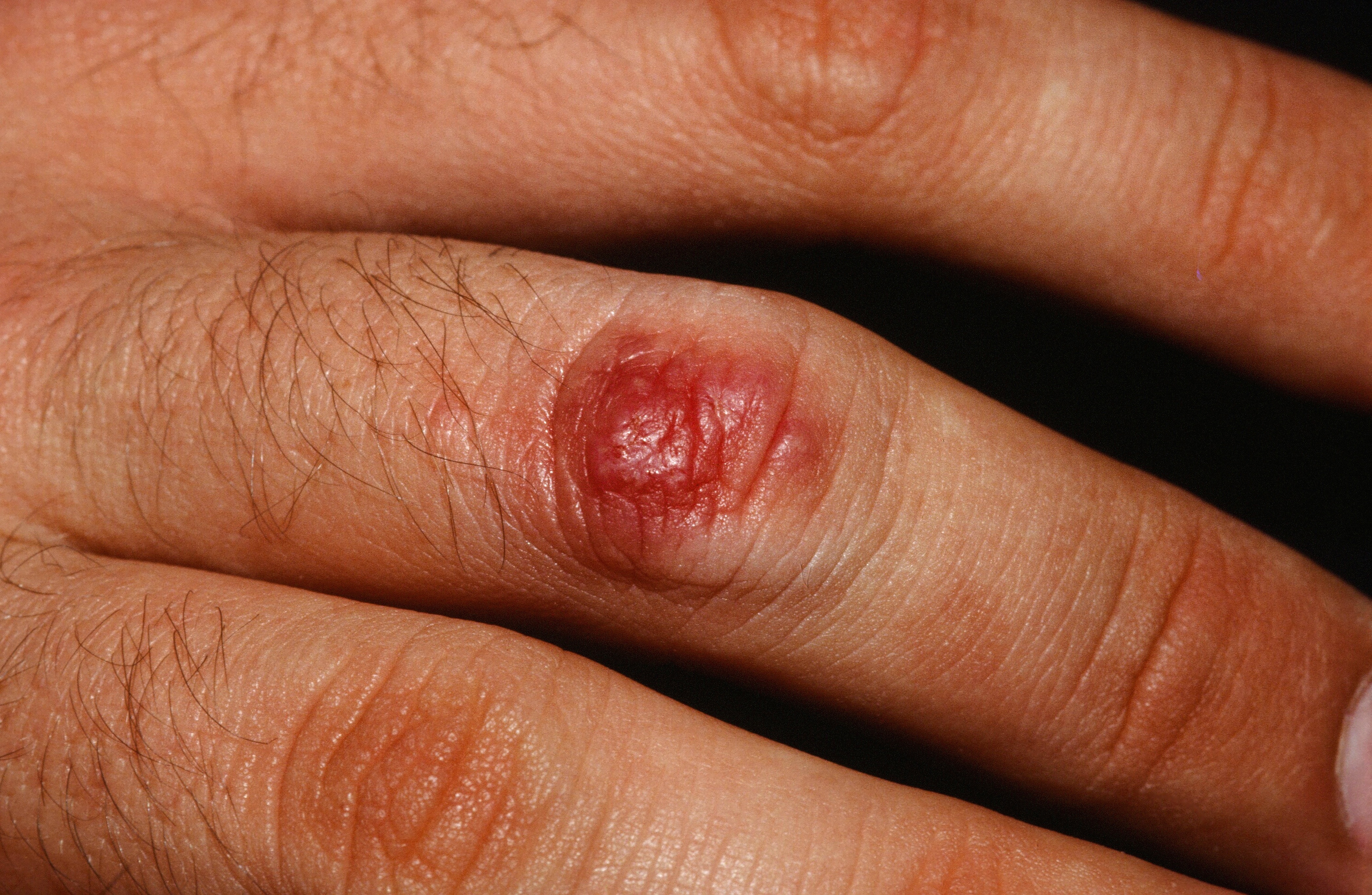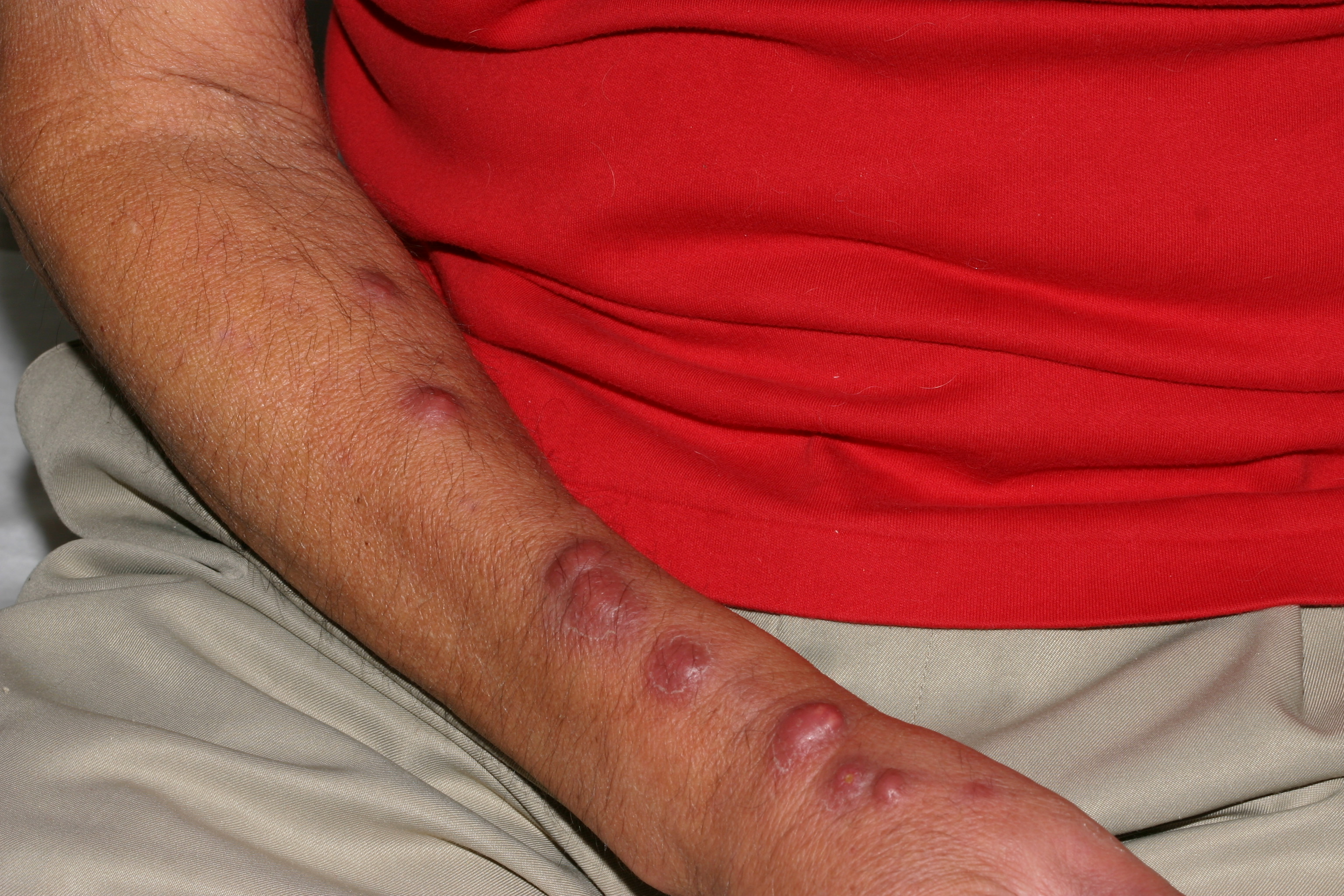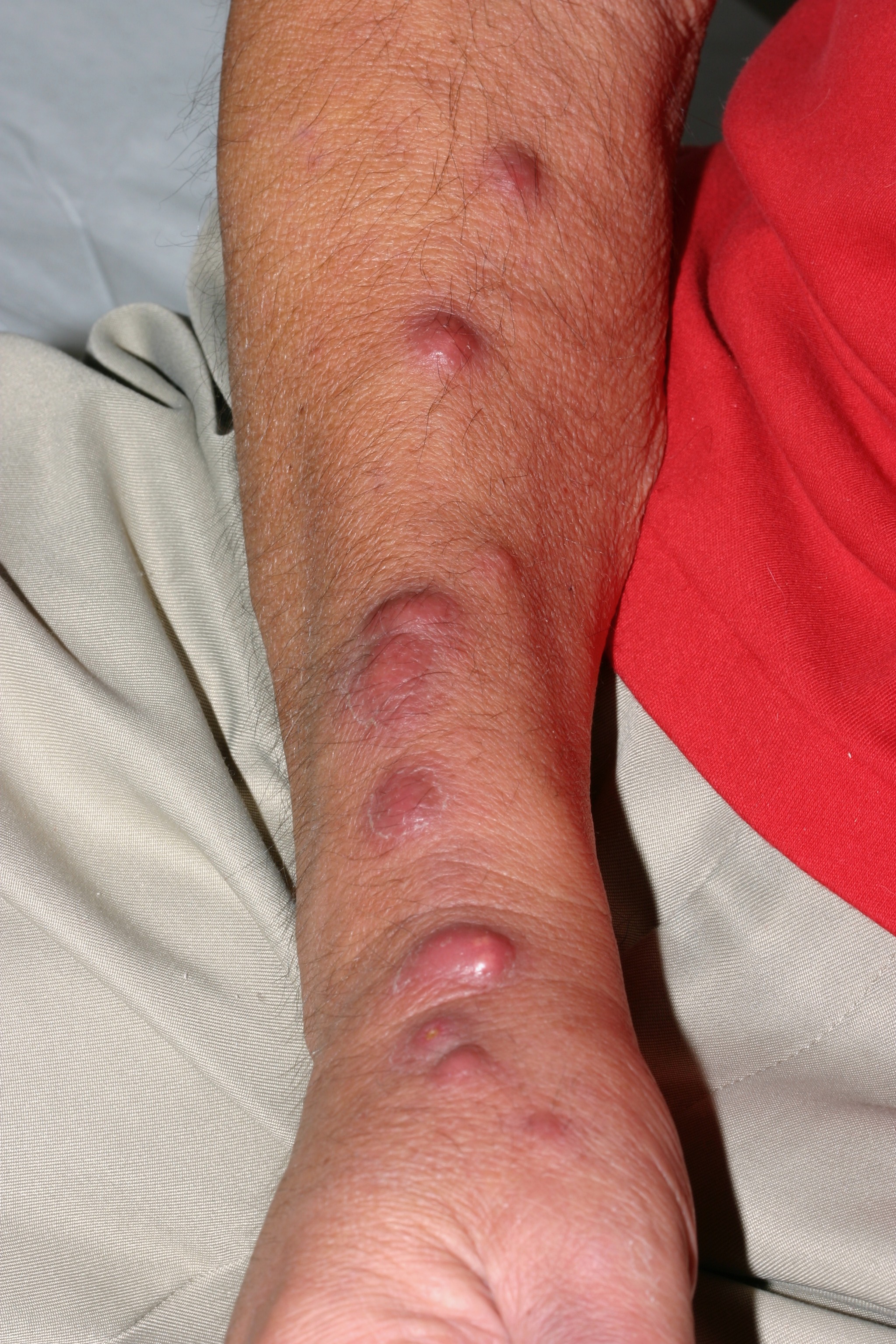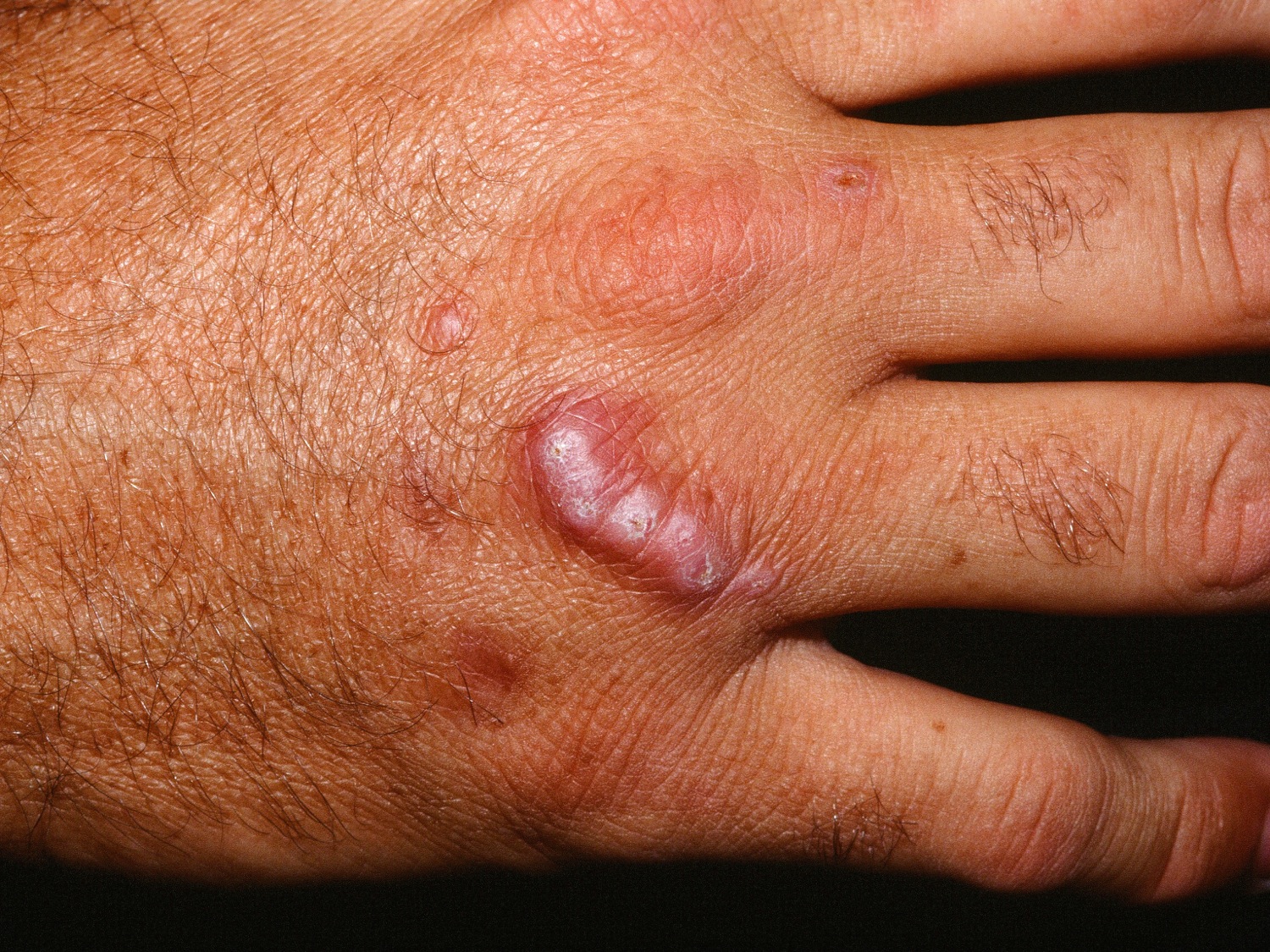 A man with a fish tank developed this over 1 month.
A man with a fish tank developed this over 1 month.
 A man with a fish tank developed this over 1 month.
A man with a fish tank developed this over 1 month.
Nontuberculous mycobacteria are called atypical mycobacteria. In the laboratory, once stained, these organisms resist acid and/or ethanol-based decolorization procedures, hence the name acid-fast. Although they are quite prevalent in nature, infection is relatively rare. Immunocompromised hosts may develop systemic infection whereas infection in a normal host is usually localized. The organisms that are most commonly encountered in clinical practice, Mycobacterium avium, M. intracellulare, M. kansasii, M. fortuitum, M. abscessus, and M. chelonae, are frequently found in water sources and soil.
The most common source of infection is a fish tank or swimming pool (thus the term swimming pool granuloma or fish tank granuloma) caused by the organism Mycobacterium marinum. Patients often don't associate hand trauma from an aquarium to their skin lesion. Repeated, direct questioning when faced with an indolent, nodular, inflammatory lesion of the hand is in order.
Some families with a marked tendency to infection with mycobacteria have been identified as having a genetic defect in the receptor for interferon gamma.
Perhaps the most common presentation is the inflammatory nodule on the extremity that spreads proximally along the lymphatics. Local trauma is often the source of inoculation and thus, the dorsa of the hand--especially about the knuckles--is a common site. Other presentations are possible including a solitary verrucous or smooth, inflammatory nodule or multiple, draining abscesses.
Hydrotherapy foot baths at nail salons can be a source of mycobacterial infections of the lower leg. Atypical mycobacterium infections should be suspected in patients (especially women) with persistent boils on the lower legs and recent exposure to hydrotherapy foot baths.
Nodular lymphangitis, also known as sporotrichoid sporotrichoid spread, is a skin condition characterized by inflammatory nodules along the lymphatic vessels. These nodules typically appear along the path of the lymphatic drainage from a primary skin infection site. The condition is often caused by infectious agents like Sporothrix schenckii, Nocardia brasiliensis, Mycobacterium marinum, or Leishmania braziliensis, but can also be caused by other infectious or non-infectious agents.


Fish tank granuloma on thumb and sporotrichoid spread of nodules up the arm.

Atypical mycobacterial infection in a surfer.
Who is Dr. White? | Privacy Policy | FAQs | Use of Images | Contact Dr. White